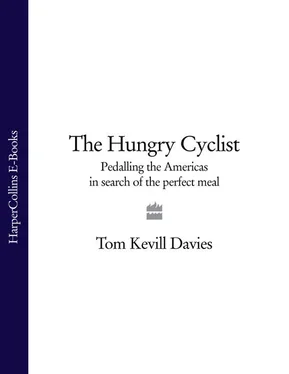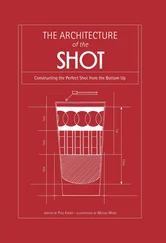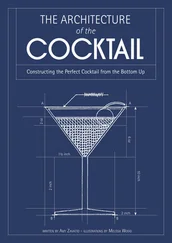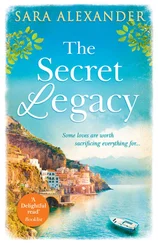‘Fleisch’ meaning meat and ‘kuechle’ meaning little cake, this simple hearty snack was by no means a culinary masterpiece, but it did just the job after an evening of heavy drinking with cowboys, and it no doubt did the same after a hard day farming the fields in the bread basket of America. It turned out to be a folded pastry envelope the size of a pair of Y-fronts, filled with a well-seasoned beef patty. Deep-fried for four or five minutes in a large vat of oil until golden brown, they were left to cool just a little before being handed in a paper napkin to hungry customers. After two fleischkuechles, and suffering from first-degree burns to my mouth, I began to master the art of eating these napalm-filled pockets. One: carefully nibble away the top corner. Two: avoid the jet of hot steam that is blasted into your face. Three: gently squeeze your fleischkuechle a few times, drawing in some cool evening air. Four: nibble a little more from the corner. Five: insert a healthy squirt of tomato ketchup and a few scoops of sliced pickles. Six: devour. I don’t know how many I ate, but for the rest of the night I seemed to commute between the bar and the stand outside. With a little food inside me I was able to keep up with my new fast-living comrades in a frenzy of dancing and drinking until a very large girl bought me a ‘real cowboy’ drink called a rusty nail.
Peeling my face from the dried puddle of drool that had accumulated on the plastic groundsheet of my tent, I enjoyed those fleeting blissful moments of memory loss before the previous night’s excess came rushing home in a crashing headache and a violent wave of nausea. Still fully clothed, I had only made it halfway into my tent and pulling myself to my feet was embarrassed to find a damp patch around my groin. At the age of twenty-seven, I had wet my tent and now I knew I could never be a cowboy. With no other choice, I packed up my bicycle and rode out of town.
The party are in excellent health and spirits, zealously attached to the enterprise, and anxious to proceed.
Capt Meriwether Lewis, Fort Mandan, 7 April 1805
In August 1803, Meriwether Lewis and William Clark, under the orders of the President, Thomas Jefferson, set out on an expedition to explore the Missouri river and try to establish a river route across the continent. Leaving Pittsburgh, Lewis and Clark led a corps of thirty-three men across America, and by Christmas 1804 were camped in for the long winter at Fort Mandan, a few kilometres outside Stanton. Having to endure skirmishes with natives, starvation, harsh winters and disease Lewis and Clark pushed deeper into what was then Louisiana. At last, finding the navigable waters of the Missouri river, they constructed a fleet of small boats and with the help of local natives followed the Missouri upstream into the ominously named Badlands of North Dakota.
With a terrible hangover, and my spirits low, I left Stanton following in the famous footsteps of Lewis and Clark.
Until now the changes in the landscape of the Midwest had been subtle but, as I entered the dramatic surrounds of the Badlands of the Theodore Roosevelt National Park, the changes became more dramatic.
‘I grow very fond of this place, and it certainly has a desolate, grim beauty of its own, that has a curious fascination for me,’ said President Theodore Roosevelt in 1883 and I could see why. For thousands of years the gentle flow of the Missouri river has carved out vast multicoloured canyons in the otherwise flat surroundings. Peculiar towering structures rise out of the ground as the sun highlights bright layers of sedimentary rocks built up over millions of years. I spent a wet and stormy night here, camped amongst the bison that roamed freely through the parkland. Staring up at the night sky, it was hard to imagine that these few hardy beasts once roamed the prairies in herds so big they would have been visible from space.
At the peak of their existence it is estimated that over sixty million bison, or buffalo as they are more commonly known, roamed the land between Mexico and Canada. As the great herds of buffalo migrated with the seasons, so too did the Native American tribes, such as the Lakota, the Sioux and the Cheyenne.
Considering their dependence on buffalo, it is not surprising that the Native Americans held the animal in the highest regard. Not only did the buffalo provide meat but almost every part of its body could be put to some use. Its hide for clothing and shelter. Its bones for tools and weapons. Its tough stomach as a vessel for carrying water. But the well-balanced relationship between the Native Americans and the buffalo would soon be lost for ever, changed by the introduction of white settlers. After Lewis and Clark, more and more white fortune-hunters began to head west in search of riches and glory. With horses and guns, buffalo were an easy target, and buffalo-hunting soon became directly associated with the adventures of life in the Wild West. Buffalo hides were used for leather while their tongues became an expensive delicacy, and white hunters left rotting carcasses strewn across the prairies.
The introduction of the railroads only added to the plight of the American buffalo. As railroads stretched into the western territories, buffalo provided meat for the hungry workforce, and once the railroads were complete the destruction became worse. Hunters could now take the train into the west on specific buffalo-hunting excursions, and locomotives would slow down so that passengers could take pot shots from the windows. The wholesale massacre of this proud animal only added to the demise of the Native American tribes who relied on the migration of the buffalo, and by the time the government prohibited hunting, the population in North America had dwindled from sixty million to eight hundred buffalo. The Midwest had been turned into a buffalo graveyard. Reports tell of piles of sun-bleached skeletons stretching as far as the eye could see in every direction, to be cleared up by ’bone pickers’, who found a value in the bones as fertiliser.
Leaving the Badlands and North Dakota in August, I took Highway 2 and cycled west into Montana, Big Sky Country. More than three months on the road without much of a break meant that riding had become a Herculean effort, mentally and physically. My legs were empty and constant glances at the speedometer only revealed bad news. I was going nowhere slowly. The air was muggy and infested with mosquitoes that showed no mercy. If I didn’t keep moving above a certain speed their sharp stings drew blood, forcing me to pedal faster as if stuck on some infernal exercise machine. Unable to shake off the permanent exhaustion that hung over me and with nowhere to stop and rest properly, my mood darkened.
I was also stuck in a culinary groundhog day. Breakfast, lunch and dinner, day after day, I was eating alone at the same table in the same diner. The same waitress was taking the same order from the same clipart-decorated menu with the same false smile and around me the same old farmers were having the same conversation about the same crops. Arriving in the small town of Williston on the border with Montana, I threw up my tent in the town park and, just about mustering the effort to get undressed, I climbed inside and collapsed, exhausted.
Waking from a deep sleep and not quite knowing where you are or what’s going on can be a wonderful feeling. Waking like this to find a hard object growing into your back through the floor of your tent is a little confusing, and when this unknown growing object begins to gush water, you panic. Dazed and half asleep I scrambled about, trying to work out what was going on. Was it an animal, a giant insect, some alien being? After releasing a long, profane outburst, I began to piece together what was going on. This scene, a nasty cross between Alien and Titanic , had resulted from me pitching my tent on the town park’s sprinkler system.
Читать дальше












